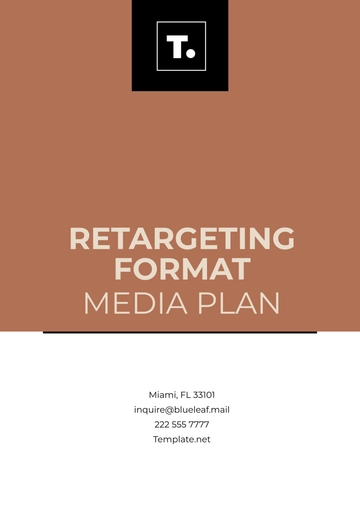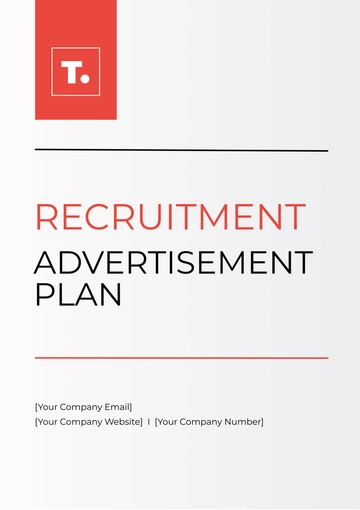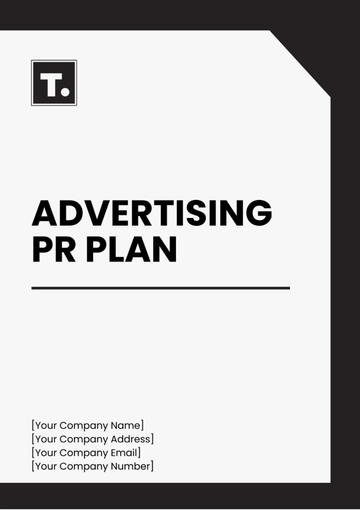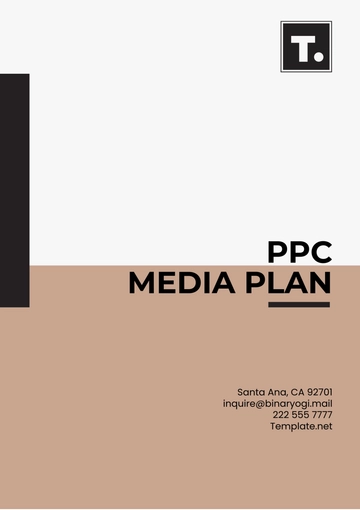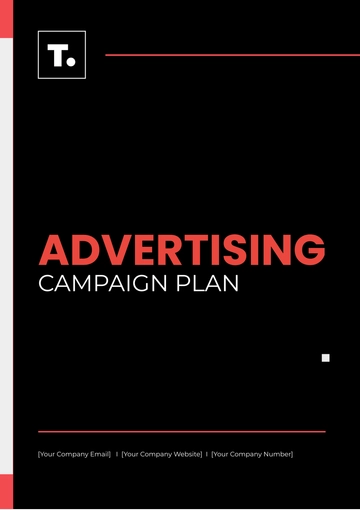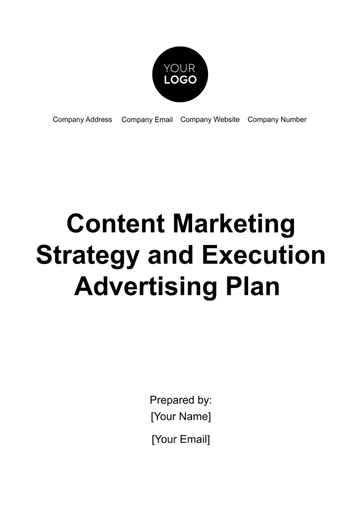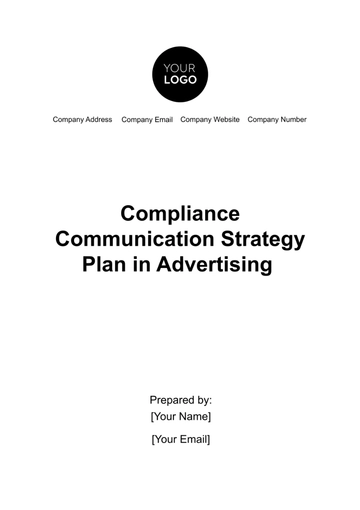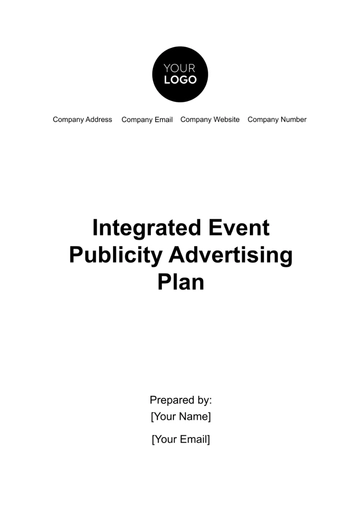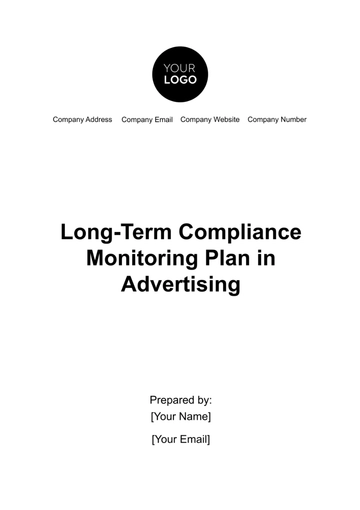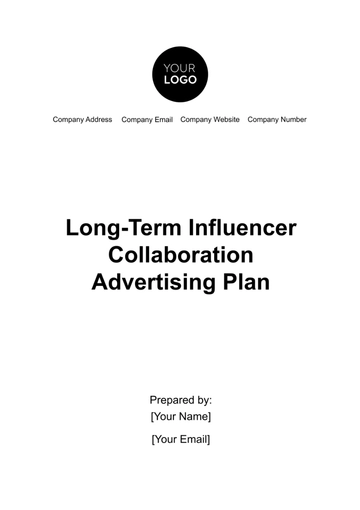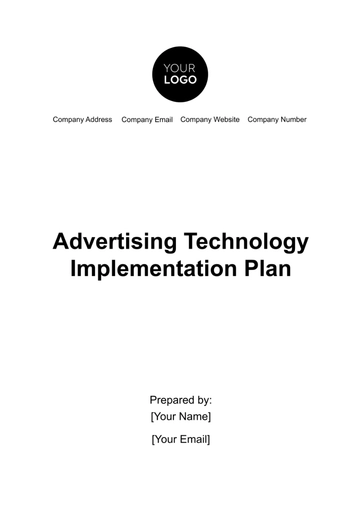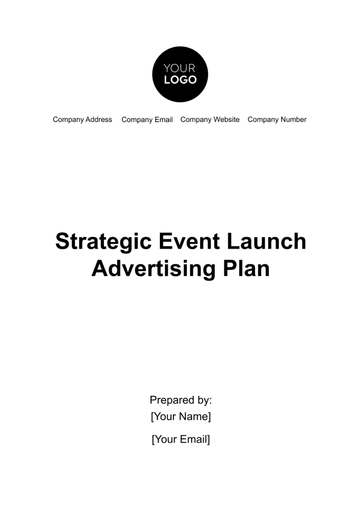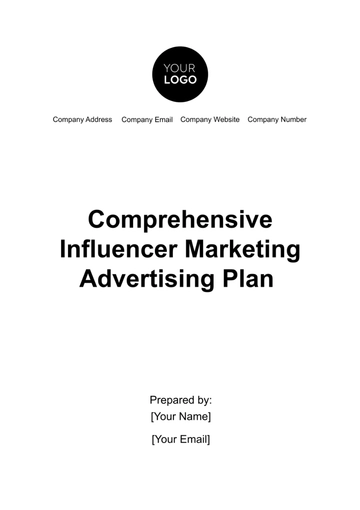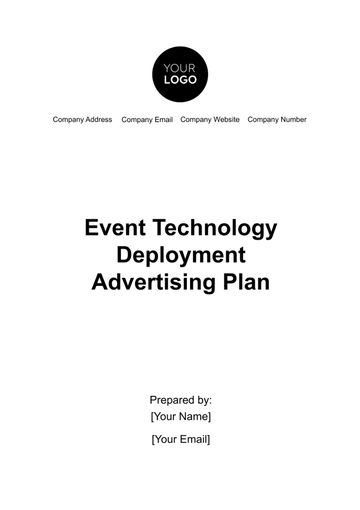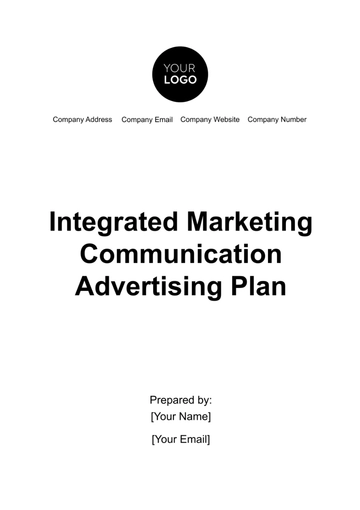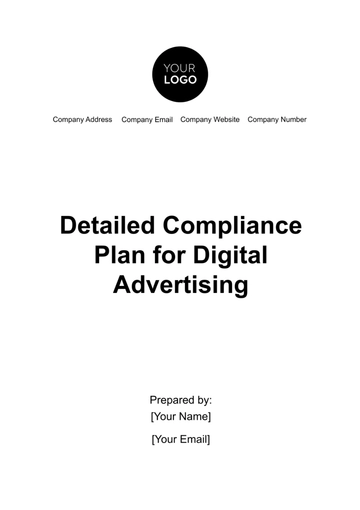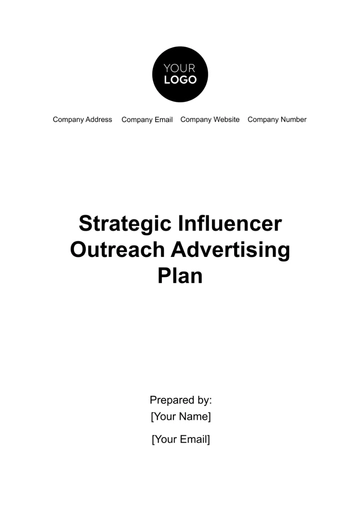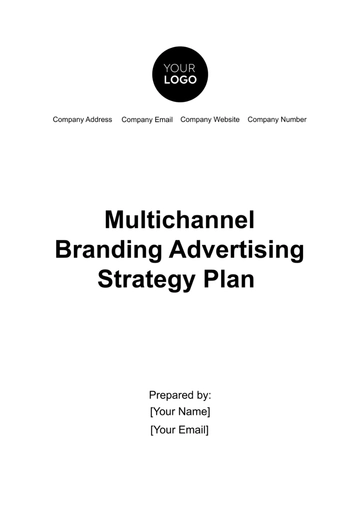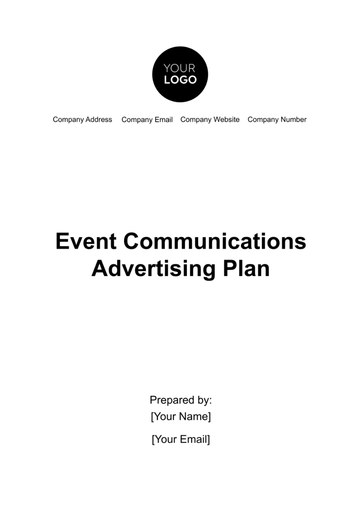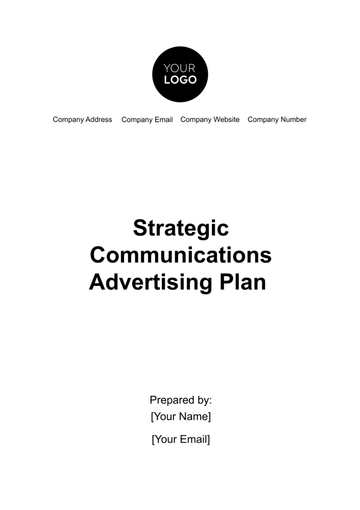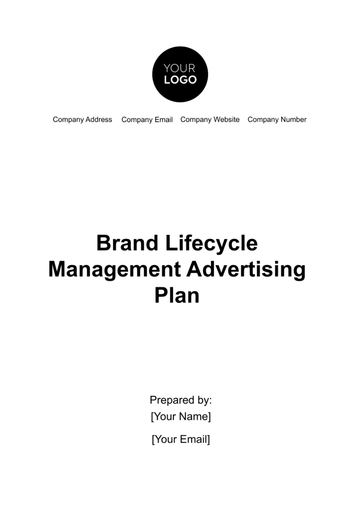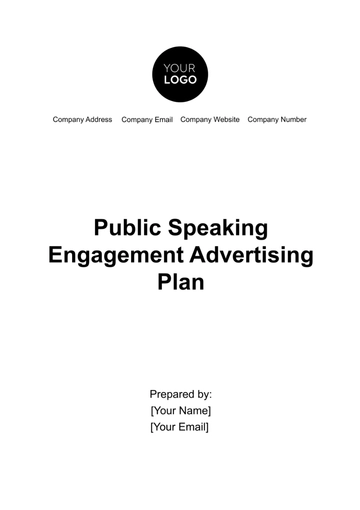Free Corporate Identity Advertising Rollout Plan
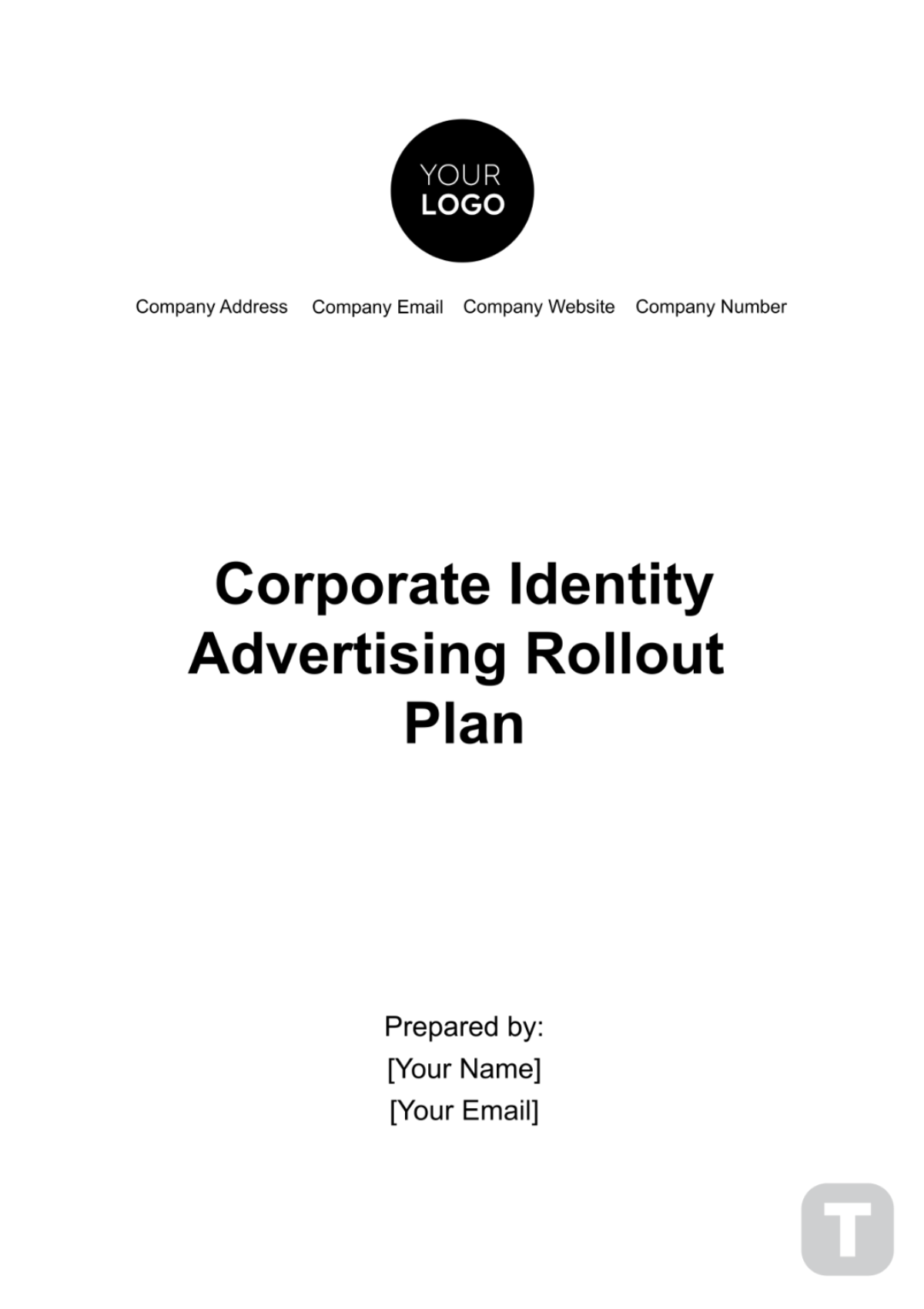
Executive Summary
This Corporate Identity Advertising Rollout Plan for [Your Company Name] presents a detailed blueprint for the strategic unveiling of our new corporate identity. In an era where brand perception significantly influences customer choices, this plan serves as a cornerstone for rejuvenating our brand image and solidifying our position in the market. The primary aim is to transition to the new corporate identity seamlessly, ensuring that the refreshed brand resonates with both existing and potential customers.
Our approach is multi-faceted, focusing on a robust introduction of the new branding across a variety of media platforms. This includes an innovative digital media strategy, a reinvigorated approach to traditional media, and a dynamic presence on social media platforms. Central to this plan is the maintenance of visual and communicative consistency, ensuring that our corporate identity is uniformly presented, irrespective of the medium.
Key to the success of this rollout is the precise targeting of specific audience segments. The plan outlines an in-depth analysis of our target demographics, their behavior patterns, and psychographics, ensuring that our messaging is not just widespread but also targeted and effective.
In addition to outlining the strategic and creative aspects of the rollout, this document also details the budget allocation and resource management, ensuring a cost-effective and efficient implementation of the plan. A phased timeline is proposed, encompassing pre-launch preparations, the launch phase, and post-launch evaluations. This phased approach allows for meticulous planning, execution, and the flexibility to adapt as necessary.
Through this comprehensive rollout plan, [Your Company Name] aims to not only unveil a new look but to embark on a journey of renewed brand engagement and heightened market presence. This plan is not merely a change of visual elements but a strategic move towards evolving and fortifying the brand in a competitive landscape.
2. Corporate Identity Overview
The chapter provides a detailed description of the elements that constitute our new corporate identity, including the new logo design, color scheme, and brand messaging. This new identity is a reflection of our brand's evolution and is aimed at reinforcing our presence in the market, aligning with our company's values, and resonating with our target audience.
A well-defined corporate identity is essential as it forms the visual and communicative foundation upon which all our marketing materials and strategies are built. It's not just about aesthetics; it's about conveying our brand's story and values consistently across all channels.
Below is a table that outlines the key components of our new corporate identity, along with detailed descriptions and samples:
Element | Description | Sample Content Details |
New Logo Design | [Describe New Logo] | "The new logo features a modern, abstract symbol representing innovation and growth, paired with a sleek, contemporary font. The design embodies dynamism and forward-thinking, symbolizing [Your Company Name]'s commitment to progress." |
Color Scheme | [Detail Color Palette] | "The primary color palette includes a vibrant blue (Hex #004DFF) symbolizing trust and reliability, complemented by a warm gold (Hex #FFD700) for elegance and quality. Secondary colors include muted grays and whites for balance and versatility in design applications." |
Brand Messaging | [Outline Key Messages] | "Our brand messaging focuses on 'Innovation for a Better Future,' highlighting our dedication to cutting-edge solutions. It also emphasizes 'Reliability and Trust,' ensuring our customers feel secure and valued in their choice of [Your Company Name]." |
This overview not only introduces the new elements of our corporate identity but also provides a guideline for their application across various marketing materials and campaigns. By aligning our new logo, color scheme, and brand messaging, we create a cohesive and powerful brand identity that will effectively communicate the values and vision of [Your Company Name].
3. Campaign Objectives
The campaign’s objectives are crucial in the Corporate Identity Advertising Rollout Plan for [Your Company Name]. It outlines the specific goals we aim to achieve with the rollout of our new corporate identity. These objectives are fundamental as they direct all our strategic and creative efforts, ensuring that every aspect of the campaign contributes towards a unified goal.
Strengthen Brand Recognition. Our first objective is to strengthen brand recognition. With the introduction of our new corporate identity, we aim to make [Your Company Name] more recognizable and memorable in the minds of our target audience. This involves not just the visual aspect of the brand, such as the new logo and color scheme, but also how we communicate our brand's unique story and values. By consistently presenting our new identity across all touchpoints, we seek to create a strong and immediate association between our visual symbols and what our brand stands for.
Increase Market Visibility. Increasing our market visibility is another key objective. The rollout of our new corporate identity presents an opportunity to capture the attention of a broader audience. This includes not just our existing customer base but also potential new customers who may not be familiar with our brand. Through targeted marketing strategies, both online and offline, we aim to ensure that [Your Company Name] becomes a well-known name in our industry and beyond.
Enhance Customer Loyalty. Finally, enhancing customer loyalty is essential in our campaign. A strong corporate identity is not just about attracting new customers but also about reinforcing the trust and confidence of our existing customers. We aim to use the rollout as an opportunity to reaffirm our commitment to quality, innovation, and customer service. By doing so, we hope to deepen our existing customer relationships and turn satisfied customers into brand ambassadors.
Together, these objectives form the backbone of our campaign. They are designed to not only introduce our new corporate identity but to also reinforce the overall perception and standing of [Your Company Name] in the market. Through a focused approach towards these objectives, we aim to achieve a successful and impactful brand transition.
4. Target Audience Analysis
This analysis is critical as it enables us to understand the specific characteristics and preferences of the audience we are targeting with our new corporate identity. By gaining a comprehensive understanding of our audience, we can tailor our strategies to effectively resonate with them, ensuring that our new corporate branding is well-received and impactful.
This analysis goes beyond basic demographics to include behavior patterns and psychographics, giving us a multi-dimensional view of our audience. Such in-depth understanding allows us to create more personalized and relevant marketing messages that are more likely to engage our target audience.
The table provides an overview of our target audience analysis:
Aspect | Description | Sample Content Details |
Demographics | Age Range, Location, Profession | "Targeting individuals aged 30-50, primarily located in urban areas, and professionals in industries such as [specify industries], reflecting our brand's core market." |
Behavior Patterns | Online Habits, Purchasing Behavior | "Our audience shows a high engagement in online platforms, particularly [specify platforms], and demonstrates a tendency for quality-oriented purchasing decisions." |
Psychographics | Lifestyle Choices, Values | "Lifestyle choices include a focus on [e.g., sustainability, technology], with values aligning with innovation, community involvement, and a preference for brands that demonstrate social responsibility." |
This targeted analysis allows us to align our new corporate identity with the expectations and preferences of our audience. Understanding their demographics helps us in choosing the right channels and mediums for our campaign. Insights into their behavior patterns guide us in crafting our messaging and marketing tactics. Finally, an appreciation of their psychographics ensures that our brand values and messaging resonate deeply with their personal beliefs and lifestyle choices. This thorough understanding is pivotal in making our corporate identity rollout a success.
5. Rollout Strategy
The Rollout Strategy outlines the comprehensive approach we will take to unveil our new corporate identity across various channels. This strategy is designed to ensure a seamless transition to the new branding and to maximize the impact of our campaign. It is a multi-pronged approach that encompasses branding and visual elements, digital and traditional media, as well as social media and online presence.
This chapter provides a roadmap for how we will implement our new corporate identity in a way that is cohesive, impactful, and aligned with our overall campaign objectives. By detailing each aspect of the rollout strategy, we ensure a consistent and effective introduction of our new brand identity to the market.
The table outlines the key components of our rollout strategy:
Strategy Component | Element | Details | Sample Content |
Branding and Visual Elements | New Branding Application | Application in Various Media | "Implementing the new logo and color scheme across all marketing materials, including digital platforms, print media, and in-store branding." |
Visual Consistency | Ensuring Uniformity Across Platforms | "Standardizing visual elements such as fonts, imagery, and color usage to maintain a consistent brand look and feel across all channels." | |
Digital Media Strategy | Website Redesign | Planned Changes, Features | "Revamping the website with a new layout, incorporating the new brand colors and logo, and enhancing user experience with new features like a customer portal." |
Online Advertising | Platforms, Approach | "Launching targeted advertising campaigns on platforms like Google Ads and LinkedIn, focusing on reaching our core professional demographic." | |
Traditional Media Strategy | Print Media | Types of Materials, Distribution | "Creating new brochures, business cards, and stationery with the updated branding; planning distribution at trade shows and business events." |
Broadcasting | TV/Radio Ad Specifications | "Developing TV and radio commercials with updated brand messaging and visuals, to be aired during prime time slots targeting our key audience." | |
Social Media and Online Presence | Platform Utilization | Which Platforms, How Used | "Active engagement on platforms like Facebook, Instagram, and Twitter, with a focus on showcasing the new branding and engaging with the audience through interactive posts and stories." |
Content Strategy | Types of Content, Posting Schedule | "Regular posting of branded content, including behind-the-scenes looks at the rebranding process, customer testimonials, and product highlights; scheduled posts during peak engagement times." |
Through this detailed and multi-channel approach, [Your Company Name] aims to effectively communicate its new corporate identity, ensuring that the brand is perceived as modern, relevant, and aligned with our audience's expectations and values.
6. Budget and Resource Allocation
This section provides a detailed breakdown of the budget necessary for the successful implementation of the rollout plan and outlines how resources will be allocated across various components of the campaign. Accurate budgeting and efficient resource allocation are vital to ensure that every aspect of the campaign is well-supported and effective, while also maintaining financial responsibility.
A well-planned budget ensures that all activities are adequately funded and that the allocation of resources aligns with the campaign’s priorities and objectives.
This chapter not only focuses on the financial aspects but also considers the human and technological resources needed to execute the plan successfully.
The table below provides a structured overview of the budget and resources allocated for different elements of the rollout plan:
Item | Estimated Cost | Resources Allocated | Description |
Digital Media | $40,000 | In-house Team, Agencies | Funding allocated for digital advertising, website redesign, and SEO. Utilizes the expertise of the in-house team and external agencies for specialized tasks |
Traditional Media | $30,000 | Production Costs, Media Buying | Budget for creating and distributing print materials, and for TV/radio ad production and broadcasting. Includes media buying expenses for optimal placement. |
Social Media | $20,000 | Social Media Team, Tools | Investment in social media campaigns, content creation, and engagement. Covers the cost of social media management tools and personnel. |
Total | $90,000 | - | Overall budget for the comprehensive rollout of the new corporate identity. |
This budgeting and resource allocation plan ensures that [Your Company Name] has a clear financial roadmap for the campaign. It balances the need for creative and effective marketing with the practicalities of financial constraints, ensuring that the rollout is both impactful and financially sustainable.
7. Implementation Timeline
The Implementation Timeline is designed to provide a structured and chronological framework for the various phases of our campaign. This timeline is pivotal for coordinating and executing the rollout plan effectively. It ensures that each phase of the campaign is given the appropriate amount of time and resources, enabling us to meet our objectives efficiently and effectively.
A well-defined timeline aids in maintaining the momentum of the campaign and allows for better tracking of progress and milestones. It also ensures that all team members and stakeholders are aligned with the campaign’s schedule, fostering a cohesive and synchronized effort.
The table delineates each phase of the campaign, along with key activities and dates:
Phase | Date | Key Activities |
Phase 1 (Pre-Launch Preparations) | [Month Day, Year] | This phase involves finalizing the branding elements, creating marketing materials, setting up digital platforms, and briefing all teams involved. It is critical for laying the groundwork for a successful launch. |
Phase 2 (Launch) | [Month Day, Year] | The launch phase marks the official unveiling of the new corporate identity. This includes the rollout of rebranded materials, launch of the new website, initiation of advertising campaigns, and active engagement on social media. |
Phase 3 (Post-Launch Evaluation) | [Month Day, Year] | In this phase, the focus is on evaluating the effectiveness of the campaign. This involves analyzing key performance indicators, gathering feedback, making adjustments if necessary, and documenting lessons learned for future initiatives. |
This implementation timeline ensures that [Your Company Name] executes the corporate identity rollout in a phased, organized manner, allowing for both impactful launch activities and thorough post-launch evaluation. By adhering to this timeline, we aim to achieve a seamless and successful introduction of our new corporate identity to the market.
8. Key Performance Indicators (KPIs)
The section details the metrics that will be used to gauge the success of the rollout of our new corporate identity. KPIs are vital as they provide quantifiable targets and enable us to measure the effectiveness of our campaign against specific objectives. Monitoring these indicators helps us understand the impact of the rollout, make informed decisions, and guide future strategies.
Having clear and measurable KPIs is essential for a data-driven approach to evaluating the campaign's performance. These KPIs will enable us to track progress, assess the effectiveness of different strategies, and identify areas for improvement.
The table offers an overview of the primary KPIs for our campaign, along with their respective targets and descriptions:
KPI | Target | Description |
Brand Recognition | [Expected Increase %] | This KPI measures the increase in brand recognition as a result of the rollout. We aim for an [X]% increase in brand recognition, gauged through surveys, brand recall tests, and market research. |
Website Traffic | [Target Increase %] | A key metric for our digital strategy, we target a [Y]% increase in traffic to our website. This will be measured through analytics tools, tracking the number of visitors, and the source of traffic. |
Social Media Engagement | [Metrics] | Social media engagement includes metrics such as likes, comments, shares, and follower growth. Our goal is to enhance engagement by [Z]% compared to pre-campaign levels, indicating a stronger online presence and audience interaction. |
By closely monitoring these KPIs, [Your Company Name] will be able to evaluate the impact of the new corporate identity on brand recognition, digital engagement, and overall market presence. These indicators will guide us in fine-tuning our strategies and reinforcing our brand's position in the market following the rollout.
9. Risk Management Plan
This section outlines the potential risks that could impact the effectiveness of our rollout campaign and provides detailed mitigation strategies. In any major marketing initiative, especially one involving a significant change like a corporate identity overhaul, it is imperative to anticipate challenges and plan accordingly. This proactive approach ensures that the rollout is robust, adaptable, and capable of navigating unforeseen circumstances.
Effective risk management is not just about identifying possible hurdles but also about having concrete plans in place to address them. This ensures that the campaign remains on track and achieves its objectives, regardless of the challenges it encounters.
The table summarizes potential risks associated with the rollout campaign, along with corresponding mitigation strategies:
Potential Risks | Description | Mitigation Strategies |
Market Fluctuations | Changes in market trends or consumer preferences that could impact the reception of the new corporate identity. | Regular market analysis to stay abreast of trends and adjust campaign messaging and tactics accordingly. |
Budget Deviations | The risk of the campaign exceeding its allocated budget, leading to financial strain. | Implementing strict budget monitoring and control measures, along with having a contingency fund to manage unexpected expenses. |
Technology Failures | Technical issues related to digital platforms, which can affect the online aspect of the rollout. | Ensuring robust IT support, having backup systems in place, and being prepared with alternative digital solutions if needed. |
By addressing these risks and having strategies in place to mitigate them, [Your Company Name] ensures that the rollout of the new corporate identity is not only effective but also resilient in the face of potential challenges. This risk management plan is an integral part of ensuring the success and stability of the campaign.
10. Appendix and References
Appendix A: Branding Guidelines
Appendix B: Detailed Budget Breakdown
References: Market Research, Branding Best Practices
Contact Information:
Name: [Your Name]
Email: [Your Personal Email]
Phone: [Your User Phone]
This document is confidential and intended for the use of [Your Company Name] only.
- 100% Customizable, free editor
- Access 1 Million+ Templates, photo’s & graphics
- Download or share as a template
- Click and replace photos, graphics, text, backgrounds
- Resize, crop, AI write & more
- Access advanced editor
Introducing the Corporate Identity Advertising Rollout Plan Template from Template.net. Crafted for seamless integration into your branding strategy, this editable and customizable template empowers businesses to create impactful campaigns effortlessly. Utilize the intuitive Ai Editor Tool to refine your message and captivate your audience. Elevate your marketing efforts with ease.
You may also like
- Finance Plan
- Construction Plan
- Sales Plan
- Development Plan
- Career Plan
- Budget Plan
- HR Plan
- Education Plan
- Transition Plan
- Work Plan
- Training Plan
- Communication Plan
- Operation Plan
- Health And Safety Plan
- Strategy Plan
- Professional Development Plan
- Advertising Plan
- Risk Management Plan
- Restaurant Plan
- School Plan
- Nursing Home Patient Care Plan
- Nursing Care Plan
- Plan Event
- Startup Plan
- Social Media Plan
- Staffing Plan
- Annual Plan
- Content Plan
- Payment Plan
- Implementation Plan
- Hotel Plan
- Workout Plan
- Accounting Plan
- Campaign Plan
- Essay Plan
- 30 60 90 Day Plan
- Research Plan
- Recruitment Plan
- 90 Day Plan
- Quarterly Plan
- Emergency Plan
- 5 Year Plan
- Gym Plan
- Personal Plan
- IT and Software Plan
- Treatment Plan
- Real Estate Plan
- Law Firm Plan
- Healthcare Plan
- Improvement Plan
- Media Plan
- 5 Year Business Plan
- Learning Plan
- Marketing Campaign Plan
- Travel Agency Plan
- Cleaning Services Plan
- Interior Design Plan
- Performance Plan
- PR Plan
- Birth Plan
- Life Plan
- SEO Plan
- Disaster Recovery Plan
- Continuity Plan
- Launch Plan
- Legal Plan
- Behavior Plan
- Performance Improvement Plan
- Salon Plan
- Security Plan
- Security Management Plan
- Employee Development Plan
- Quality Plan
- Service Improvement Plan
- Growth Plan
- Incident Response Plan
- Basketball Plan
- Emergency Action Plan
- Product Launch Plan
- Spa Plan
- Employee Training Plan
- Data Analysis Plan
- Employee Action Plan
- Territory Plan
- Audit Plan
- Classroom Plan
- Activity Plan
- Parenting Plan
- Care Plan
- Project Execution Plan
- Exercise Plan
- Internship Plan
- Software Development Plan
- Continuous Improvement Plan
- Leave Plan
- 90 Day Sales Plan
- Advertising Agency Plan
- Employee Transition Plan
- Smart Action Plan
- Workplace Safety Plan
- Behavior Change Plan
- Contingency Plan
- Continuity of Operations Plan
- Health Plan
- Quality Control Plan
- Self Plan
- Sports Development Plan
- Change Management Plan
- Ecommerce Plan
- Personal Financial Plan
- Process Improvement Plan
- 30-60-90 Day Sales Plan
- Crisis Management Plan
- Engagement Plan
- Execution Plan
- Pandemic Plan
- Quality Assurance Plan
- Service Continuity Plan
- Agile Project Plan
- Fundraising Plan
- Job Transition Plan
- Asset Maintenance Plan
- Maintenance Plan
- Software Test Plan
- Staff Training and Development Plan
- 3 Year Plan
- Brand Activation Plan
- Release Plan
- Resource Plan
- Risk Mitigation Plan
- Teacher Plan
- 30 60 90 Day Plan for New Manager
- Food Safety Plan
- Food Truck Plan
- Hiring Plan
- Quality Management Plan
- Wellness Plan
- Behavior Intervention Plan
- Bonus Plan
- Investment Plan
- Maternity Leave Plan
- Pandemic Response Plan
- Succession Planning
- Coaching Plan
- Configuration Management Plan
- Remote Work Plan
- Self Care Plan
- Teaching Plan
- 100-Day Plan
- HACCP Plan
- Student Plan
- Sustainability Plan
- 30 60 90 Day Plan for Interview
- Access Plan
- Site Specific Safety Plan

